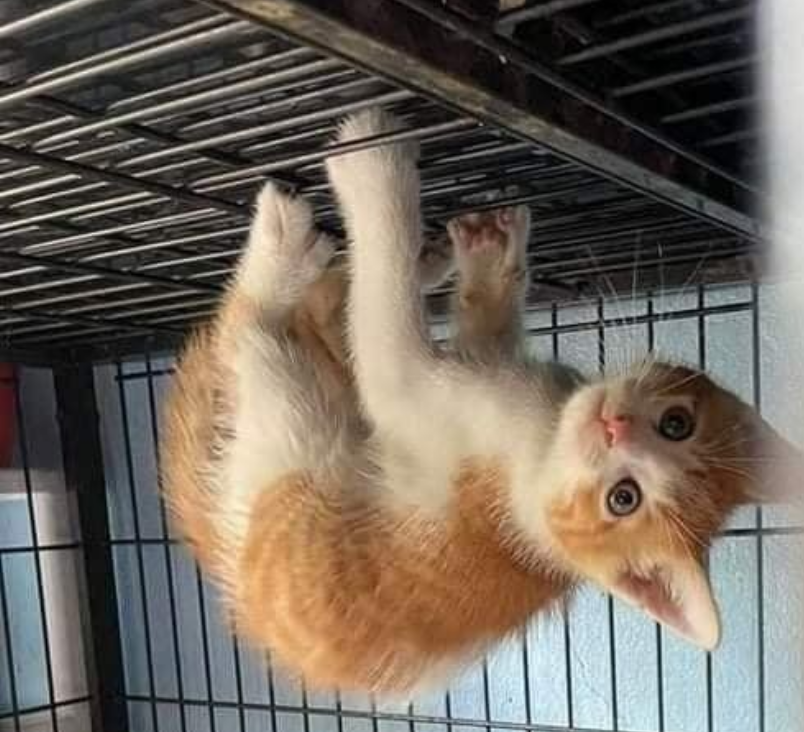If you want Seniors, you'll train them yourself!
This is what Virtuos' CEO told me, not long after I joined Virtuos in 2010 as technical art lead. And this is what I would do for 12 years - training my own seniors.At that time, hiring senior staff in China was quite challenging. Experienced Chinese artists would be hired by bigger players or by overseas studios, and getting foreign staff into China had its own difficulties...

Hire the Right People
Luckily, I was in the position to choose most of the people I would have in my team. Most of them were fresh out of college. I looked for:
- curiosity: People who had side projects, who were curious how things worked, who were thinking things through and were asking questions.
- reflection: People who could think about shortcomings in their past work or student projects, what they learned, and what they would do differently.
- collaboration: People who worked in project teams or who coached fellow students.
- motivation: People who could talk about their dreams: games they would make, tools they'd improve, things they'd research when given the time.
Junior usually don't tell you all this in interviews unless you question them and ask good follow-up questions. I also hired a few mid-level people. Those would be my "seniors" for the time being. But more often than not, the juniors would outnumber the seniors.
Why not hire a lot mid level people then? Because they also were rare, and some of them picked up bad habits at smaller, local companies that had bad leadership. Teaching a technical skills is easier than fixing bad behavior, so I prefered juniors.
The Big Studio Tour
One problem with juniors is that they often don't know what interests them and I don't know what they're good at. Juniors would start out in day-to-day support, such as fixing P4, troubleshooting issues in Max or Maya, or doing other helper tasks wherever needed. I would make sure to assign a more senior person as their mentor.
Advantages:
- they get to see many different projects
- they get to meet key people in the studio: producers, leads, art directors
- they get to work on different things, getting a feel for what they like and what they're good at.
From around their sixth month the juniors would specialize more and more under the guidance of their mentor.
Fostering Independence
Most people want to be independent, but they often don't know how. You can foster and teach that to an extent. Independence increases agency and proactivity. It also frees leads up from being the "management bottleneck".
We didn't want to burden juniors with heavy planning frameworks, but with advice that is easy to remember and to implement:
- estimates: it's okay if you don't know them. Work a bit, then we talk again. Refine your estimates as you work.
- take out the fear: a task being late isn't a problem if we can plan around it. Communicate estimates and issues regularly. Your boss will only be angry if you tell them on the last day that you're late!
- think in terms of impact and likelihood: how many people are affected? how likely is a good/bad thing to happen? That makes for easy prioritization.
- break down tasks: imagine teaching someone how to do it - what would you do first? what last? what would you have to research?
- keep a journal of your learning: build your own knowledge-base to refer to when you're stuck.
- learn to be critical of your own work: what is good about your solution or approach? what could be better? and how? get into the habit of doing retrospectives.
- don't ask if people understood you. Often juniors try to please and say "yes". Ask people to summarize what you told them. The reverse tactic also work: if someone tells you something, repeat back what you heard. Then ask questions and fill in any gaps.
The above techniques can be useful to ensure juniors are working with complete information and prioritizing the right things. Mentors should regularly apply these skills as role model and also assist juniors in applying them.
Masters of Craft and Apprentices
To onboard people quickly we established a master/apprentice relationship. A master isn't necessarily more talented, or has a higher job title, but masters have more experience in their primary skills - it's about mastery of the craft, not being the master over another person.
The master / apprentice relationship is not limited to juniors. Seniors would also have mid-levels as apprentices, and leads would have seniors. In some cases even experienced juniors could be masters to seniors for novel topics.
The benefit for the apprentice is that there are one or more dedicated mentors who have the mandate to transfer knowledge and to support the apprentice.
Benefits for the master:
- another person for redundancy and increased capacity
- practice delegation and planning skills.
- talent pipeline: allows the master to be promoted and move on to new responsibilities, as there is someone who will be able to take over their work.
Benefits for the organization - establishing a talent pipeline:
- learning and teaching becomes everyone's responsibility.
- everyone has a deputy who can take over. People being promoted or exiting aren't a threat to the team's productivity anymore.
- onboarding of new people is a practiced regularly and well-understood activity.
Skill Management and Innovation
We use skill maps to better understand what skills juniors bring to the team and how they grow over time. Skill maps include skills acquired at work and skills from outside work. Skill maps need to be regular updated. They are a good tool for having regular reviews and growth discussions.
Skill maps are built via skill surveys where people rate themselves. In addition ratings from supervisors and internal/external clients can be incorporated.
This allowed us to identify people who used Blender privately, bring them together, and get Blender adoption kickstarted early on. We did the same for other topics, such as photogrammetry, proceduralism and machine learning.
Risk Management
Letting juniors with little experience work independently in production is risky. Before delegating work to juniors, mentors must do proper risk assessment: what could go wrong? How likely would it be? What is the impact on the project team? What avoidance or mitigation plans are in place? We want juniors to learn, but not at the expense of their projects.

Promoting Learning
A key part to leveling up juniors is learning. The goal is to create a safe learning environment with low barriers to participation, where everyone in the team can contribute, even if it's just a little.
- assign tasks to promote learning: to push people out of comfort zone, to expose them to new tech and experiences.
- the there are no dumb questions rule: nobody should ever feel ashamed for asking any question or admitting they do not know something. Even seemingly 'dumb' questions need to be approached with an honest, open mindset.
- foster discussion: if other juniors can answer questions, offer guidance, then they should do so, before the lead jumps in. Teaching others is a great tool for learning!
- journal keeping: we encourage everyone to keep a journal of their learning. This is primarily a person learning tool, so it can take any form, as long as it makes journal-keeping easy. Even CEOs keep journals!
- pair programming, shadowing, in-person code/architecture/solution reviews: watching people do things, and being able to ask questions, and kicking off in-depth discussions is a great way to learn things!
- promoting face-time and synchronous communication wherever possible.
- hosting regular retrospectives: how can we work better as a team? What are we proud of? What can be improved?
- frequent, informal sharing beats formalized lecturing.
Create a Healthy, Humane Work Environment
Starting in AAA game development, moving to a new town, meeting lots of people - it can all be incredibly stressful! Even more so, if you're expected to learn quickly and have to be independent. There is a real danger that people will fall into a pit of despair and burn out.
Here's what we did to offer support:
- be proactive in offering support. Juniors often don't know what they don't know.
- ensure juniors feel safe and empowered before you ask them to deliver high performance.
- focus on improving strengths. Make people better at what they love doing!
- don't dwell on mistakes. Mistakes will happen. Don't ask "who did it?!" - ask "what have we learned and how can we avoid it in the future"?
- establish a rhythm and allow processing time that lets people digest everything they have learned.
- limit overtime: people with a clear head are better than overworked ones.
- support juniors through their lows and believe in them. If you hired the right people, they will overcome their problems with some help.
- plan growth: constantly ask yourself how assignments, activities, meetings contribute to the junior's growth.
- treat people with respect.
I found a coaching mindset, i.e., the Agile "servant leader" works well in most situations. When speed is the issue, make sure questions can be asked later, to ensure learning takes place.
Distributed Teams
When leveling up a team in a remote location, you will need the following:
- a person in the remote location who acts as local mentor and point of contact.
- plan more time for relationship building: talking about hobbies, joking around, getting to know people on a more personal level, if possible.
- give clearer and more explicit instructions and guidance.
- increased synchronous communication and regular face-time e.g. video calls.
- in-person visits and team-building (although we did without them during Corona)
- shared activities and strong inclusion in activities to avoid the creation of distributed silos.
Building Agile Team
All the above measures create a truly agile team:
- independent team members with a high degree of autonomy.
- a culture of continuous learning and improvement.
- strong teamwork through apprenticeships and collaborative learning.
- skill overlap and T-shaped skill profiles ensure the team is versatile.
Measuring Progress
Performance indicators:
- direct feedback from project teams: ask leads and people who directly interacted with your junior.
- direct feedback from master/mentor.
- accuracy of estimates (planned vs actual).
- regressions / follow-up bugs reported per task / other quality indicators.
- number of problems solved independently (vs helped by master/mentor).
Subtle cues:
- team members turn less often to the lead for problem-solving, but start consulting each other.
- you notice that you'll be asked less often to help people break down or schedule tasks.
- team members will start to surprise you with novel approaches and insights you didn't think of.
- estimates become more accurate.
- higher engagement and contribution to topics in retrospectives and meetings.
Did it work?
Yes, I think it did:
- Virtuos kept continuously expanding and taking more technically challenging projects.
- We became EA's preferred outsourcing partner, expanding the depth and scope of technical content creation.
- Members from my team moved on and became successful directors in other AAA companies.
- Team members often praised the independence and work culture.
This is also each team member's very own achievement to be proud of! — they put the work in, they were engaged, motivated and kept being dedicated through highs and lows!